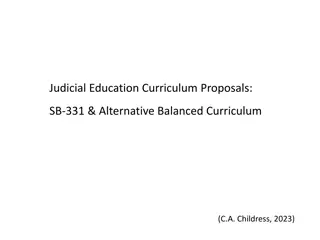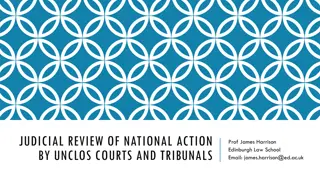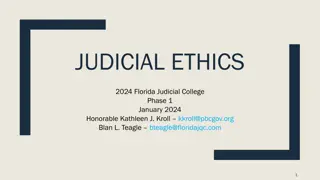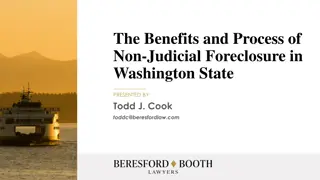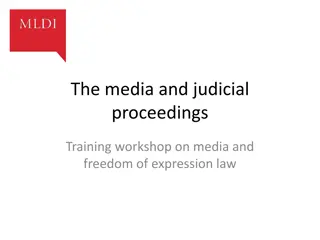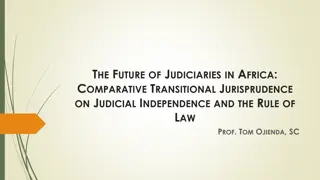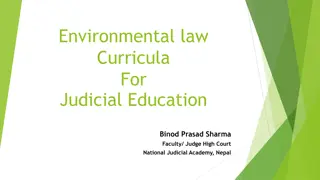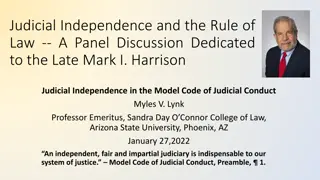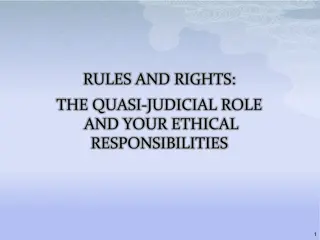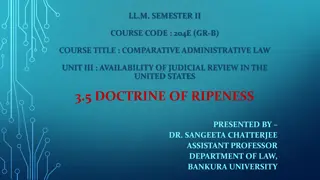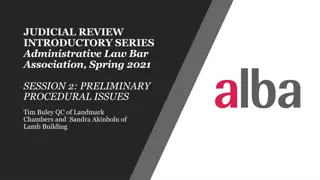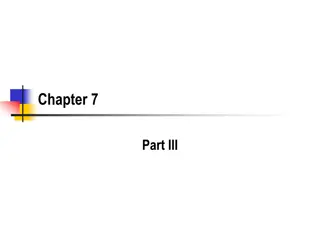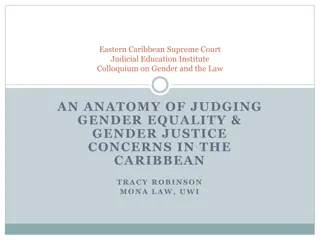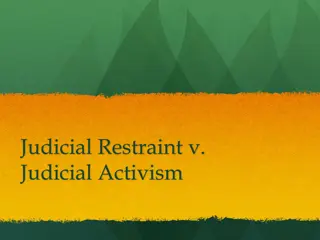Judicial Selection Methods used in US State Judiciaries To guide you in your research assignment
Different selection methods used in US state judiciaries include non-partisan elections, partisan elections, and merit selection with retention elections. Each method has its own characteristics impacting the accountability, independence, and competence of judges as well as voter knowledge and diversity of candidates.
Download Presentation

Please find below an Image/Link to download the presentation.
The content on the website is provided AS IS for your information and personal use only. It may not be sold, licensed, or shared on other websites without obtaining consent from the author.If you encounter any issues during the download, it is possible that the publisher has removed the file from their server.
You are allowed to download the files provided on this website for personal or commercial use, subject to the condition that they are used lawfully. All files are the property of their respective owners.
The content on the website is provided AS IS for your information and personal use only. It may not be sold, licensed, or shared on other websites without obtaining consent from the author.
E N D
Presentation Transcript
Judicial Selection Methods used in US State Judiciaries To guide you in your research assignment
Types of selection systems for the judiciary 1) Non partisan (no political party) elections This selection mechanism involves having multiple judicial candidates run against one another in electoral races, but without identifying themselves by political party. Characteristics of this selection method: Accountability of the judges is directly to people who elect them (People have a say via elections) Campaign finance in non-partisan elections is the same as partisan elections. Judges maybe biased towards their donors. Judges may retain their partisan/political biases, even though political parties are not fielding candidates Doing away with party names denies voters relevant information regarding the candidates. However, this forces the voter to go and look at qualifications of the candidates Quality/Competence of judges maybe same as that of partisan and merit selection races An electoral method of selecting the judiciary may or may not increase the social diversity of judicial candidates
Types of selection systems for the judiciary 2) Partisan elections (Texas) This selection mechanism involves having multiple judicial candidates run against one another in electoral races, each candidate being fielded by a political party. Characteristics of this selection method: Judges are accountable to Texan voters; People have a say via elections. Campaign finance plays a big role: may hamper independence/impartiality of the judiciary Political parties play a big role: may hamper independence/impartiality of the judiciary Quality/Competence of judges maybe same as that of other selection procedures Party names gives voters relevant information regarding the candidates, especially to a lay voter. Voters rely on the attractiveness of judicial candidates names in voting, since they lack other knowledge of the candidates. There are so many candidates on the ballot that it is impossible for voters to make informed decisions. An electoral method of selecting the judiciary may or may not increase the social diversity of judicial candidates
Types of selection systems for the judiciary 3) Merit selection and retention election of judges: Merit selection: a judicial reform under which judges would be nominated by a blue-ribbon committee, then be appointed by the governor, and, after a brief period in office run in a retention election Retention election: an election in which voters decide whether to keep an incumbent in office by voting yes or no to retain the incumbent and in which there is no opposing candidate and no political parties fielding candidates. More than 16 states use a version of this method to select judges.
Types of selection systems for the judiciary 3) Continued. Characteristics of Merit Selection and Retention Election of Judges: Has been proposed as a reform measure/alternative in Texas. Ensures accountability of the judiciary to people; as people have a say through retention elections. Judges maybe less biased and more independent in their judgments as political parties are not fielding candidates and the role of campaign finance in swaying judicial decisions towards campaign donors is eliminated. However, partisan politics is not completely insulated, as judges, can still have personal political biases. Quality of judges maybe better than other methods of selection, as the blue ribbon commission is supposed to select the best candidates. However, critics dispute this and say that quality is the same as other methods of selection. The social diversity of judicial candidates may or may not be helped by this method. A lot depends on whether the commission appoints minority candidates. Decreased transparency: as nominating committee meets behind closed doors. Not as much as public input compared to partisan elections. This is a major reason why Texas has not adopted this method.
Types of selection systems for the judiciary 4) Governor appoints judges/ Gubernatorial appointments: Always in combination with part or all of the legislature or a nominating commission Characteristics of this method: Quality of judges maybe better. Critics disagree Campaign finance of partisan races eliminated Judges maybe less biased and more independent in their judgments as political parties are not fielding candidates and the role of campaign finance in swaying judicial decisions towards campaign donors is eliminated. However, partisan politics is not completely insulated, as governor, legislature as well as commission have political leanings. Accountability to people is indirect. No direct accountability as it is a closed door appointment. The social diversity of judicial candidates may or may not be helped by this method.
Types of selection systems for the judiciary 5) Legislative Selection: Legislatures select candidates by majority vote, in combination with recommendations by a nominating commission Judges maybe less biased and more independent in their judgments as political parties are not fielding candidates and the role of campaign finance in swaying judicial decisions towards campaign donors is eliminated. However, partisan politics is not completely insulated, as governor, legislature as well as commission have political leanings. Quality of judges maybe better. Critics disagree Accountability to people is indirect, no direct accountability Not completely insulated from politics, as legislature has political leanings. The social diversity of judicial candidates may or may not be helped by this method. Only in Virginia and South Carolina


